The furnace's intake duct lets fresh air into your house, while the exhaust vent provides a channel through which fumes and carbon monoxide generated through heating are eliminated. Seeing that these pipes serve different roles, you may wonder how far apart they should be. We researched the topic to provide you with an answer.
The furnace intake and exhaust should be at least 10 feet apart. But your furnace's manufacturer or the local codes in your area may necessitate different dimensions. So, check these regulations before finalizing the furnace installation plans.
Please keep reading as we elaborate further on the placement of these ducts. We will also address other furnace-related queries to help you make informed decisions regarding furnace setup and maximize your investment in the furnace.
The Placement Of Furnace Intake And Exhaust Ducts
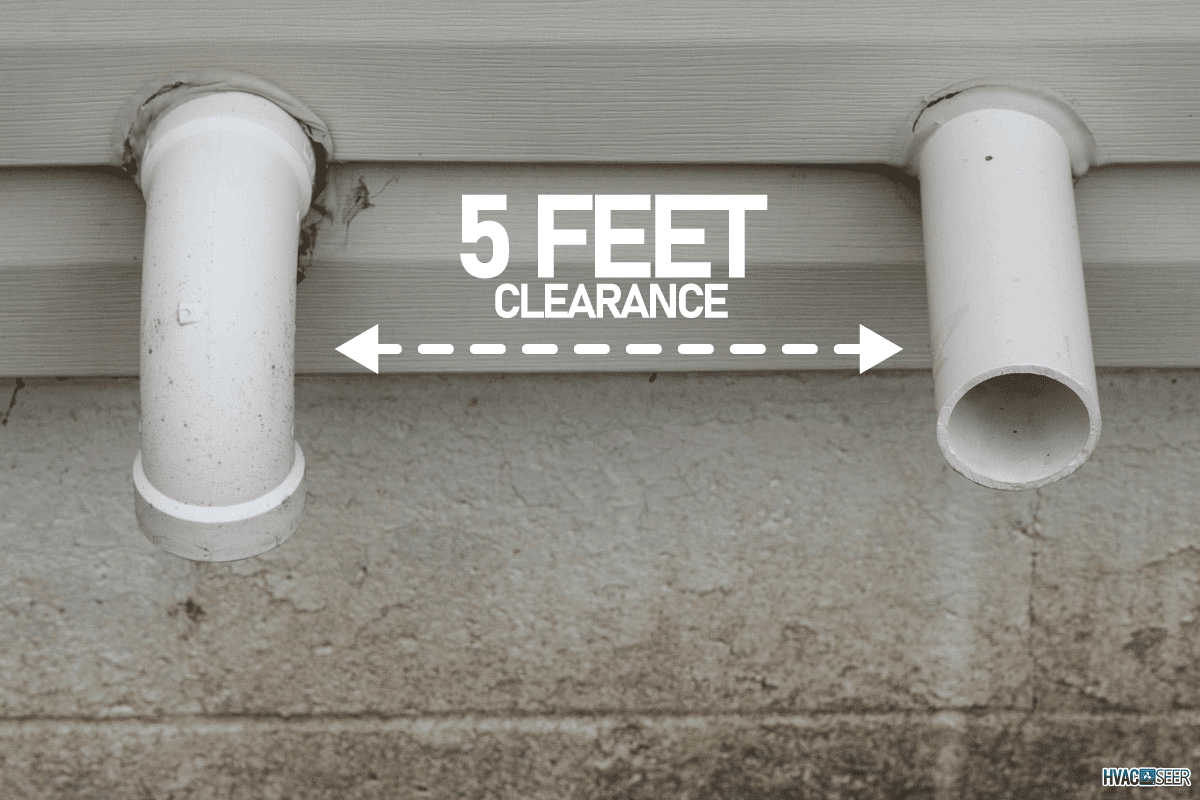
There are different types of furnaces that help to maintain comfortable temperatures in your home during the cold seasons. These furnaces require a form of energy to heat air that is then circulated in your home.
You can have an electric furnace that uses electricity or a fuel-powered furnace that relies on natural gas, oil, or propane to generate heat.
It's important to note that the furnace's energy source influences its setup—fuel-powered furnaces require venting, but you do not need to vent a gas furnace. This post will focus on fuel-powered furnaces.
The combustion process of natural gas, propane, or oil produces harmful by-products such as carbon monoxide. And although carbon monoxide is clear and odorless, it is pretty toxic—inhaling substantial amounts of the gas can be fatal.
As a safety measure and to enhance their efficiency, the furnaces have intake and exhaust ducts. But it is critical to ensure that there is sufficient clearance between the ducts to keep the exhausted fumes from re-entering your home and contaminating indoor air.
It is best to ensure that there is at least ten feet between the furnace's intake and exhaust ducts. In addition, there should be at least five feet of clearance around these pipes to ensure proper air circulation.
Please note that different manufacturers or your local building codes may recommend different dimensions. Therefore, checking that before settling on your furnace installation plans is best.
Where Should You Install A Furnace Exhaust Vent?
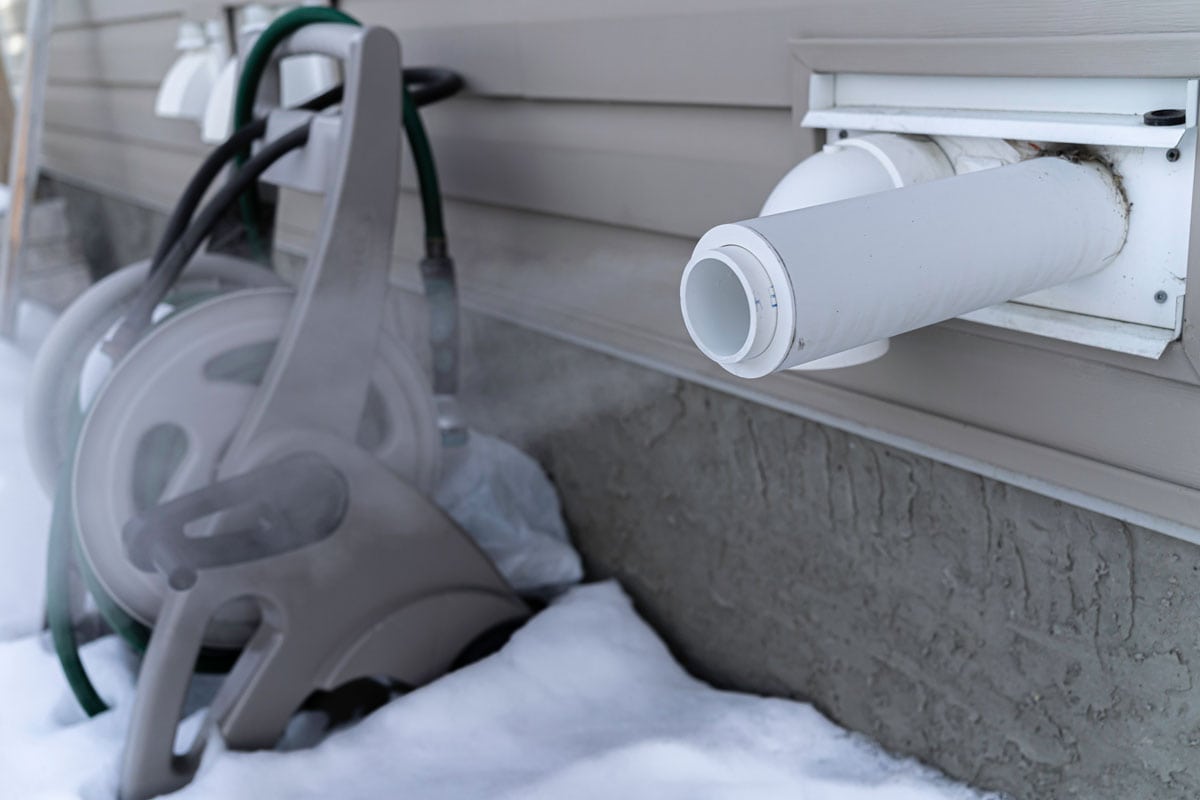
The furnace's intake pipe should be positioned below the exhaust pipe. In addition, the intake's opening should be downward facing while the exhaust pipe should face upwards and outwards. These considerations minimize the risk of drawing the toxic fumes back into your house.
Depending on the furnace's efficiency, the intake and exhaust pipes can be located either on the side of your home or the roof.
If on the side of the house, ensure that the intake pipe is at least two feet above grade. This clearance helps the pipes remain above the snow line even after heavy snow to avoid blockage.
Because the combustion process in a standard efficiency furnace generates hot gaseous by-products, they naturally rise. Therefore, you should install the exhaust pipe of a standard efficiency furnace on the roof.
However, if you have a high-efficiency furnace, the combustion by-products contain moisture and gaseous substances. The presence of moisture reduces the temperature of the exhaust gases. So, these by-products do not draft up as easily.
For this reason, venting the exhaust fumes via the side of the house is ideal. Alternatively, you can install an inducer fan to help push the fumes through the roof.
Whatever location you choose for your exhaust vent should be away from vegetation or AC units that the exhaust fumes can damage. Further, it should be away from doors, windows, and other intake vents other than the furnace intake.
In addition to all these, ensure that you comply with the installation instructions provided by the manufacturer that affect distance from electrical meters and gas service regulators.
What Pipes To Use For Furnace Exhaust
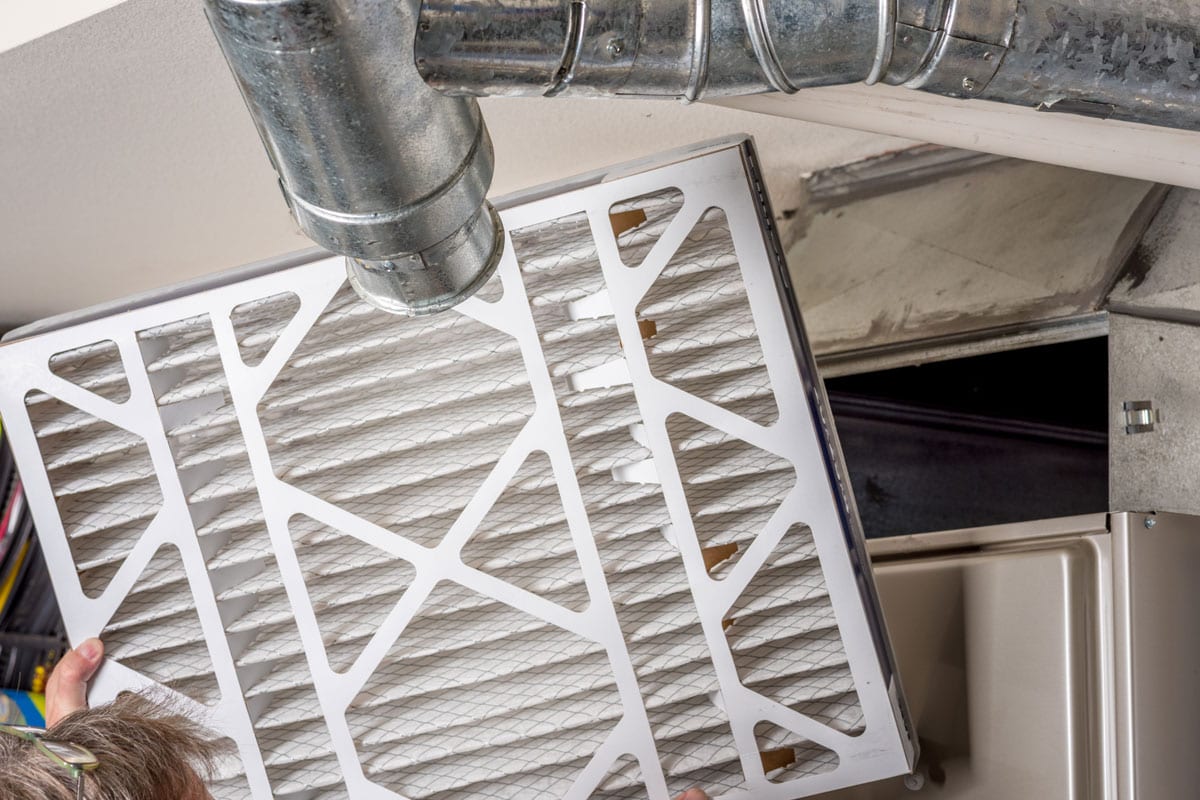
The ideal type of pipe to use in your furnace installation will depend on whether you have a standard or high-efficiency furnace.
We've mentioned that standard efficiency furnaces produce hot gaseous products. Therefore, it is ideal to use metallic pipes since they can withstand high exhaust gases temperature. If you use PVC pipes, you risk their melting when exposed to hot fumes.
The exhaust from high-efficiency furnaces is acidic. So, it is best to use schedule 40 PVC pipes because, unlike metallic pipes, they won't be corroded.
It's also important to note that you should slant the furnace's exhaust pipe to ease condensate drainage. If you fail to slope the pipe sufficiently, the condensate will stagnate, thus reducing the pipe's inner diameter. Consequently, there won't be enough pressure to eliminate the fumes.
Typically, the furnace installation setup requires at least 1/4-inch per pipe foot. That way, the condensate formed in the exhaust vent flows back to the furnace's drainage system for draining.
How Many Elbows Can A Furnace Vent Have?
Adding elbows to your furnace vents can help make tight corners, thus maintaining the system's efficiency and proper airflow. But including too many elbows can adversely affect the furnace's operation.
Manufacturers provide tables with guidelines on the maximum piping length for a given number of elbows. Often, the assumption is that the furnace vent should have two elbows.
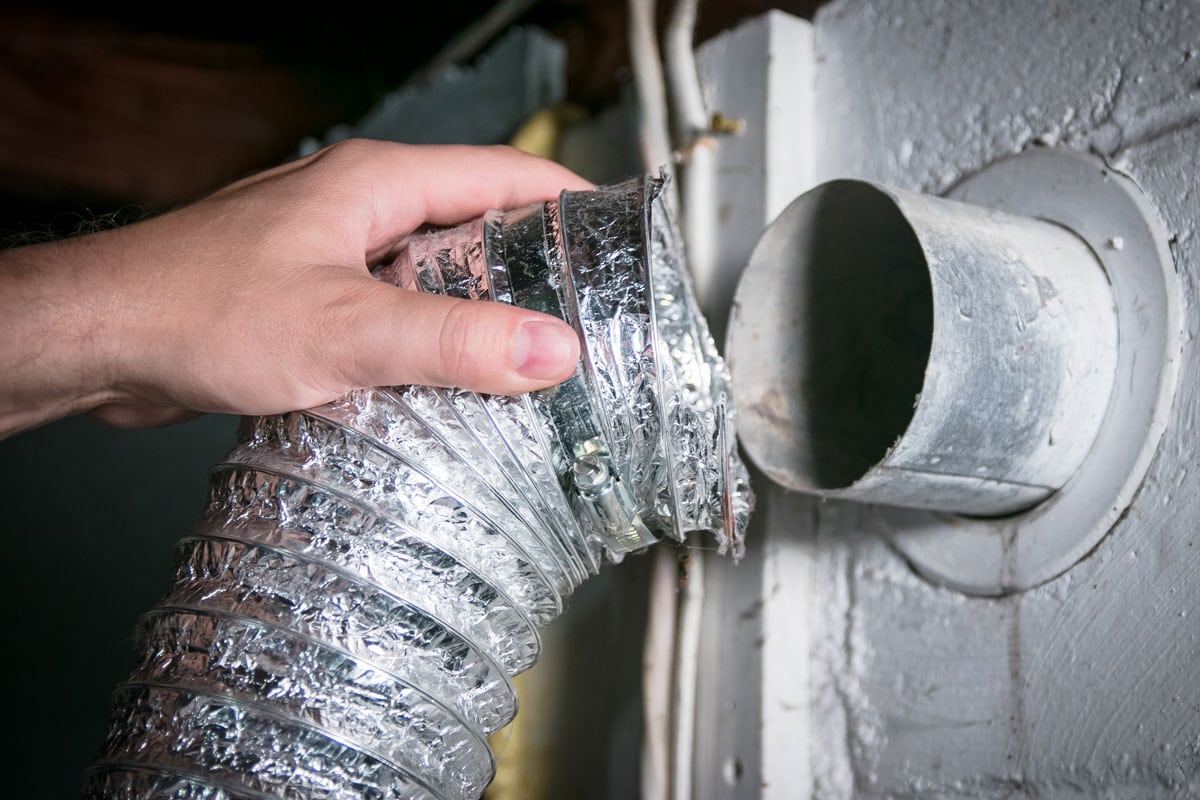
How To Identify A Furnace That Is Not Venting Properly
Your furnace not venting correctly is a critical safety concern since carbon monoxide can easily leak into your house. So, it is crucial to know how you can tell when your furnace has venting problems. Here are some pointers:
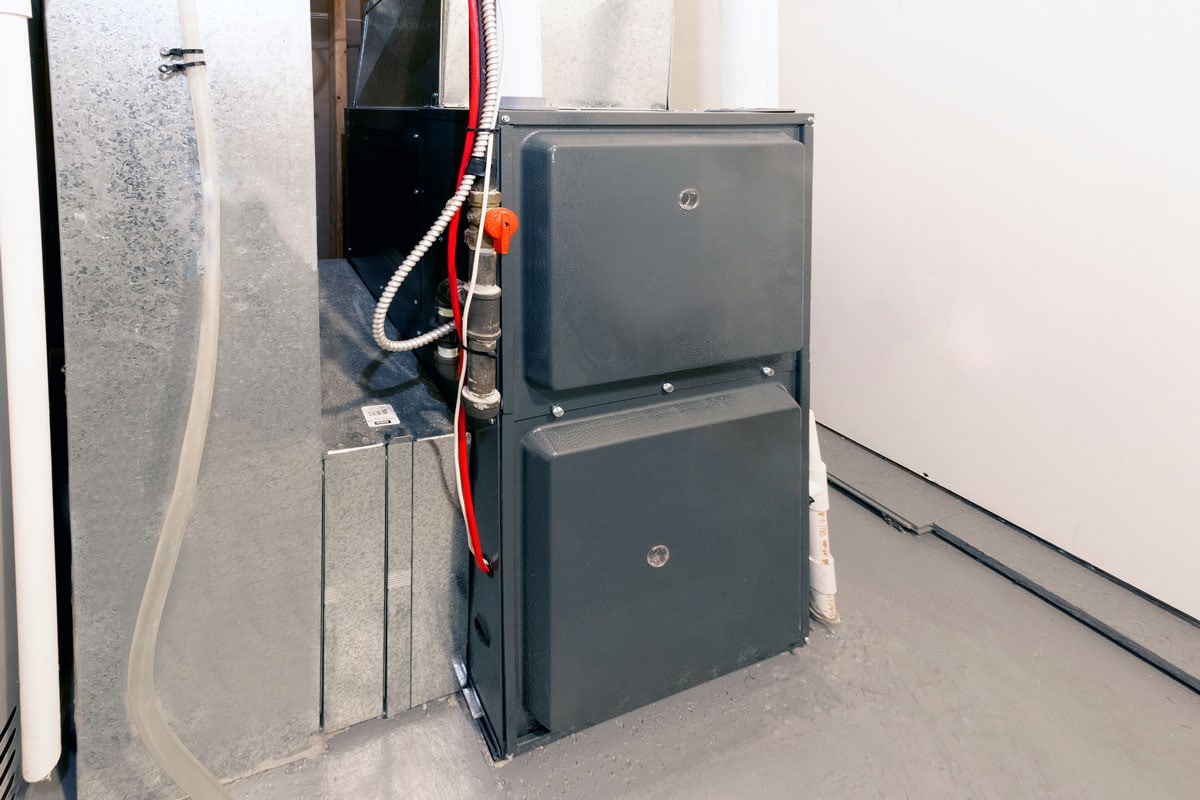
Moisture On Windows
The furnace system is subject to wear and tear. And with time, as the furnace nears the end of its useful life, the pipes may crack from corrosion, and pipe joints become loose. This deterioration can result in exhaust leakages such that some fumes seep into your home during the venting process.
We've pointed out that high-efficiency furnaces generate by-products that contain moisture. Therefore, if the exhaust fumes enter your house, you may notice condensation forming, especially on the windows.
This problem is prevalent in the morning since, at this time, the glass surfaces of the windows are at a lower temperature than the fumes. So, when the warm and humid air contacts the cooler glass surface, the vapor condenses on the windows.
Backdraft
Backdrafting is where combustion gases such as carbon dioxide and carbon monoxide leak indoors. It can occur due to an improperly sized exhaust pipe, an alteration in the furnace system's air pressure, or even a blockage in the exhaust pipe.
If the exhaust pipe is too wide, the rate at which the exhaust fumes flow through it reduces. Consequently, there is more time for these fumes to leak into your home. Blockages in the exhaust vent can also cause toxic fumes to infiltrate the indoor air.
You may encounter improperly sized exhaust pipes if you upgrade your furnace without altering its piping.
For example, a higher-efficiency furnace draws out more heat from the exhaust fumes before they enter the exhaust vent. So, condensation is likely to occur if further heat loss occurs in the exhaust pipe. This problem is expected to occur when the pipes run through unconditioned spaces.
A malfunctioning exhaust fan can alter the system's pressure differential. As a result, the furnace system fails to exhaust combustion fumes.
Examining For Backdrafting
There are some ways that you can put to the test to check for backdrafting. For starters, examine for hot air around the furnace's exhaust vent entrance.
You can also light a wooden stick and hold it near the opening of the exhaust vent. If the smoke doesn't rise, it is likely that exhaust fumes are not coming out either.
Finally, a carbon monoxide detector can help identify if there are toxic levels of this pollutant in your indoor air.
This air quality monitor can help you keep tabs on your indoor air's carbon monoxide, humidity, and temperature levels. See it on Amazon.
How To Keep Exhaust Pipes Free From Blockages
You can install a vent screen to keep the birds and rodents out of your exhaust pipe, thus avoiding obstructions. Ensure that you buy vent screens made explicitly for furnace systems to minimize the risk of interfering with the airflow.
Regularly inspect the intake and exhaust vents outside your home for snow or ice blockages. Please clear any blockages as soon as possible to protect your pipes from freezing and, thus, interfering with the furnace's operation.
Wrapping Things Up
Proper spacing between the furnace intake and exhaust pipe minimizes the risk of toxic fumes being drawn into the home. Generally, you'll need a vertical clearing of at least 10 ft. But this may vary depending on the manufacturer's recommended installation instructions and the local codes.
Schedule regular furnace maintenance and tune-up before the heating season begin to ensure that your family stays warm and comfortable throughout the season. Also, watch out for any signs that may imply that your furnace is not venting well to ensure your family stays safe.
Before you go, feel free to check out our other posts:

